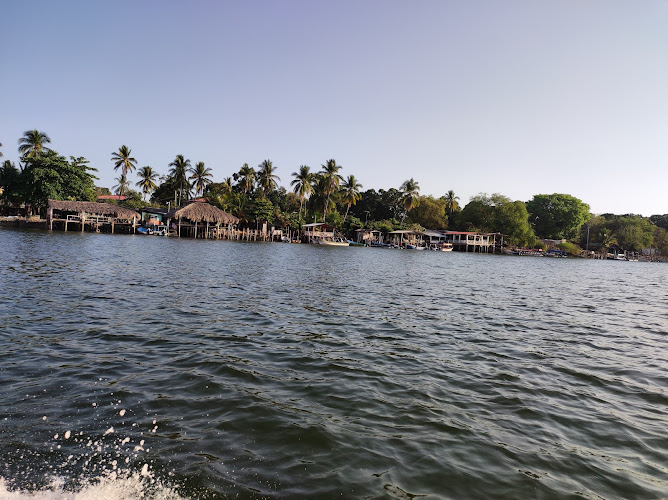
About Estero Jaltepeque
Description
The Estero Jaltepeque is one of El Salvador's most captivating coastal treasures - and I say that as someone who's explored quite a few estuaries in Central America! This sprawling wetland ecosystem, where the Lempa River meets the Pacific Ocean, creates an incredible maze of mangrove forests, serene waterways, and hidden beaches that'll make you feel like you've discovered your own private paradise.
Y'know what really gets me excited about this place? The remarkable biodiversity! Every time I've visited, I've spotted something new. From elegant herons tiptoeing through the shallows to playful dolphins swimming near the estuary's mouth (if you're lucky!), the wildlife viewing opportunities are absolutely phenomenal. The local fishermen still use traditional methods passed down through generations, and watching them navigate these waters with such skill is pretty darn impressive.
What amazes me most about Estero Jaltepeque is how it manages to stay relatively under-the-radar despite being such a natural wonder. The mangrove channels create this amazing natural labyrinth that's perfect for kayaking - trust me on this one, I learned it the hard way after getting slightly lost my first time here!
Key Features
• Extensive mangrove forest system spanning thousands of acres • Rich biodiversity with over 100 bird species • Traditional fishing communities and authentic local culture • Natural channels perfect for kayaking and boat tours • Pristine beaches along the estuary's edge • Spectacular sunset views over the Pacific Ocean • Sustainable fishing practices and oyster farming • Important breeding ground for sea turtles • Crystal-clear waters ideal for swimming in certain areas • Local seafood restaurants serving fresh daily catchesBest Time to Visit
From my multiple visits throughout the year, I've found that the dry season between November and April offers the most reliable weather for exploring Estero Jaltepeque. The water's calmer, skies are typically clearer, and you'll have better chances of spotting wildlife. But honestly? December through February is absolutely prime time - the temperatures are perfect and the humidity isn't too overwhelming.
Early mornings are magical here (even though I'm not usually a morning person!). The water's like glass, and the birds are super active. If you're into photography like me, you'll want to catch that golden hour light. Sunset tours are pretty special too - there's something about watching the sun dip below the horizon while gliding through the mangroves that just hits different.
Try to avoid September and October if possible - those are typically the rainiest months, and the water can get pretty choppy. Plus, some tour operators might cancel trips during heavy rains.
How to Get There
Getting to Estero Jaltepeque isn't exactly a walk in the park, but that's part of what keeps it special! From San Salvador, you'll want to head down the coastal highway toward La Costa del Sol. The drive takes about an hour and a half - though it once took me nearly three hours because I couldn't resist stopping at every roadside fruit stand (the mangoes were worth it!).
If you're not driving yourself, catch a bus from San Salvador to La Costa del Sol, then grab a local shuttle or taxi to the estuary. Most hotels in the area can arrange transportation too. And here's a pro tip from someone who learned the hard way: book your boat tour or kayak rental in advance, especially during peak season.
Local fishing villages like El Cordoncillo and La Puntilla serve as main access points to the estuary. These communities are super welcoming to visitors, and the locals often have the best insights about the area.
Tips for Visiting
Listen, I've made pretty much every rookie mistake possible at Estero Jaltepeque, so let me save you some trouble! First off, bring way more water than you think you'll need - the coastal sun is no joke. And don't forget your sunscreen (reef-safe, please!) even if you're planning to stay under the mangrove canopy.
Wearing quick-dry clothes is a game-changer. You might not plan on getting wet, but trust me, between the humidity and occasional splashes, you'll thank me later. Bug spray is your best friend, especially during dawn and dusk tours.
Consider hiring a local guide - they know all the secret spots and hidden channels. Plus, they'll share fascinating stories about the area's history and ecosystem. My favorite guide, Manuel, knows exactly where to spot the rarest birds and has the best jokes (though his English is limited).
If you're into photography, bring a waterproof camera or phone case. The lighting can be tricky under the mangroves, so a polarizing filter helps too. And please, respect the local communities and wildlife - this isn't just a tourist spot, it's home to countless species and generations of fishing families.
Oh, and one last thing - carry some cash! Many local restaurants and tour operators don't accept cards, and you definitely don't want to miss out on trying the fresh seafood at the small family-run spots. The grilled fish with coconut rice at Doña Martha's little restaurant? Absolutely life-changing!